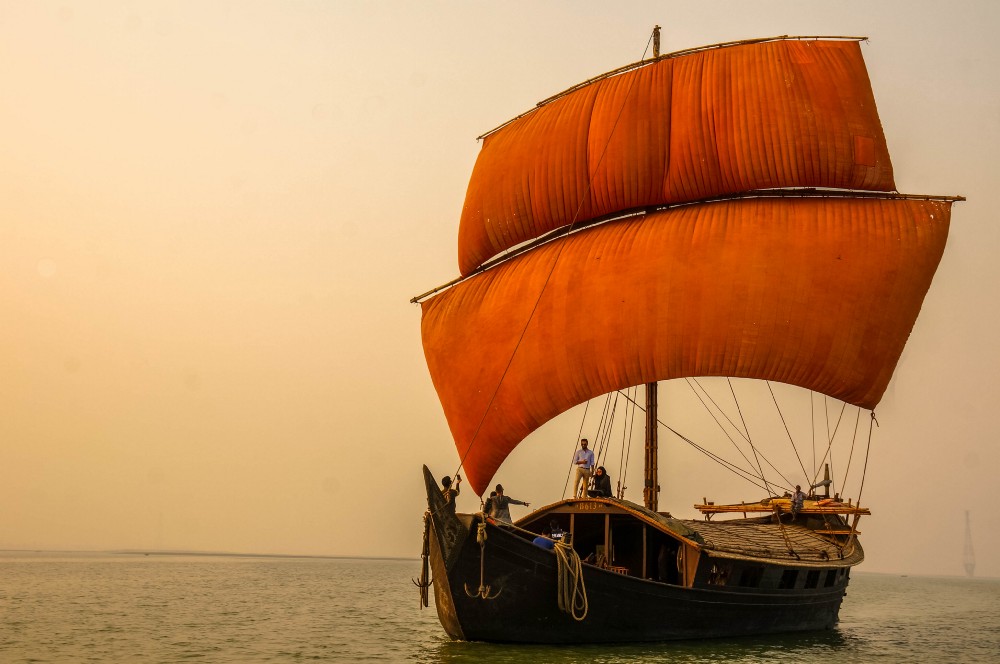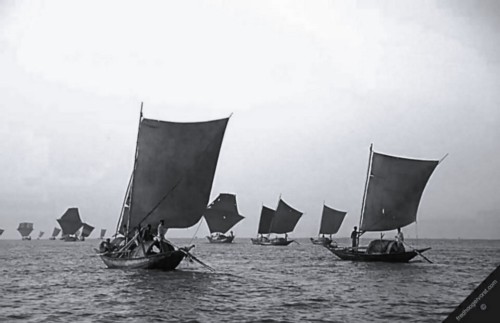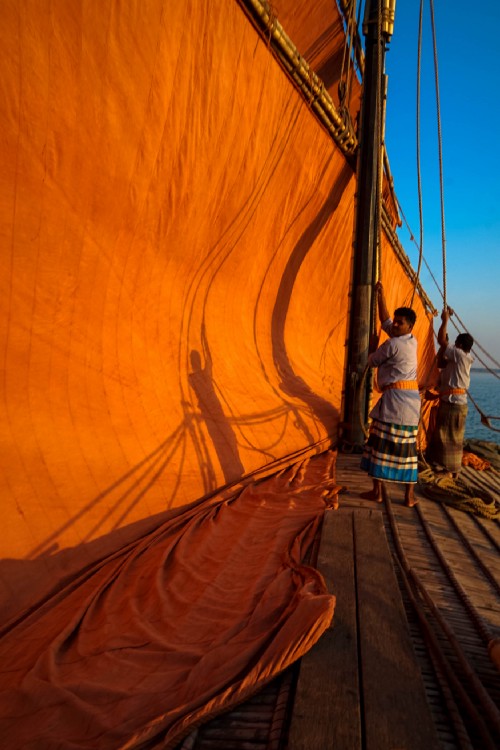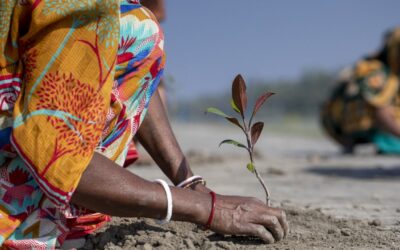Climate change and modern technology have stolen the wind from the gorgeous ochre Bengali sails. Are they gone for good?

Jul 2, 2019 | Cultural Preservation, Empowerment
There is no image quite as nostalgic as that of the Padma or the Meghna adorned with countless sails. The scene seems to capture the lost soul of rural Bengal.
But for many who struggled under those magnificent, towering masts it’s a memory they’re all too happy to forget.
“Those were difficult days,” says Qayyum, a transport businessman. “When the wind died down, we were stuck pushing a 200-ton beast upstream with a pole.” There was a whole occupation of labourers in every village along the coast, who would pull these big boats upstream (“goon tana”) during the seasons when the breeze was unfavourable. “We often fought our way upriver for days to reach our destination.”
25 years ago, Qayyum worked aboard a Panshi, a traditional load-bearing vessel local to Pabna. Crafted with fine Shaal or Shundari wood, these majestic beauties would ply between Chandpur, Dhaka and Nakalia — once a river port that served as the hub for all the trading between north Bengal and the rest of the country.
Now, Nakalia port is a nondescript riverside bazar. The original “ghat” (dock) lies at the bottom of the river, having been eroded away in the years following the 1988 flood.
Changes in geography and the climate have made the already-difficult art of sailing all but impossible. Meanwhile, technology has brought far easier ways to transport goods. Trucks can move much quicker than boats. New bridges and highways have connected most of the country. The decline of traditional river boats became irreversible in the aftermath of the devastating flood of 1988, when sails started being replaced en masse by engines rejigged from Chinese pumps that had flooded in as aid.
Now, Qayyum owns four diesel-propelled trawlers, and can be sure that no matter the season, if his cargo leaves Nogorbari one morning, the empty boat will be back from Dhaka the next day. Why reminisce about a time of great difficulty?
By the late nineties, a glimpse of a puffed-up sail had already become an exotic occasion. “We realized that if we didn’t do something, the art of making these boats would just disappear right before our eyes,” says Friendship founder Runa Khan.

In 1997, Runa Khan and her then husband contracted a team of boatbuilders to restore and refit a 93-foot malar, a cargo vessel from the regions around Nakalia, Pabna, complete with a foldable mast and sails. “The idea was not to bring the boats back to the river,” says Runa. “We just wanted to make sure these artisans could keep their skills alive, so that our future generations have access to the beauty, the techniques and the history.”
At the time, aspects of the art had already started to disappear. Traditionally, the sails are made of a specialized fabric with a triple thread weave that responded to the breeze in a particular way, and was able to withstand the elements. “It was extremely difficult to find the fabric,” says Majid, captain of the malar, named B613. “But we eventually found a person at Nakalia bazar who would make it for us.”
The sail lasted 21 years, but by the time it needed to be replaced, the original cloth maker had died. In fact, over the course of the two decades, the weave of the sails had become entirely extinct, and it became impossible to find anyone who would attempt it. Help came from a program run by Friendship NGO.
“I took a sample from the original sail to our weaving centre in Kurigram,” says Abdul Jabbar, manager of Friendship’s program which creates livelihoods for char people by teaching them weaving. “We had to replicate the weave based on the sample. We managed to rejig one of their handlooms so that it could do the job.”

Next, there was a distinct process for dying it with red earth to give it the ochre hue. The earth makes the sails more course and resilient, says Jabbar.
“It is very close to the cloth of the original sail, but it’s not exactly the same,” says Majid. “The thread is a touch lighter.”
Lastly, the sail needed to be stitched. Fortunately, there were still several tailors at Nakalia Bazar who could do the job. “It’s a tricky measurement,” says Majid. “Most tailors wouldn’t be able to learn it. Unless these tailors teach their craft to someone, it will also die with them.”
A river full of sails straining in the Southerly wind is probably a scene lost to history. But for now, one pair of ochre sails still flies proudly over B613. When it’s time to replace it, the task will again be a challenge.



